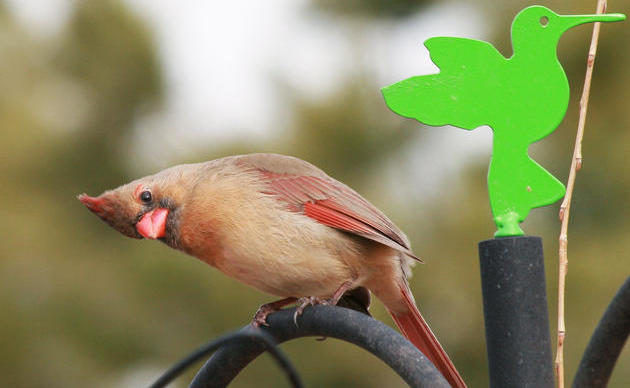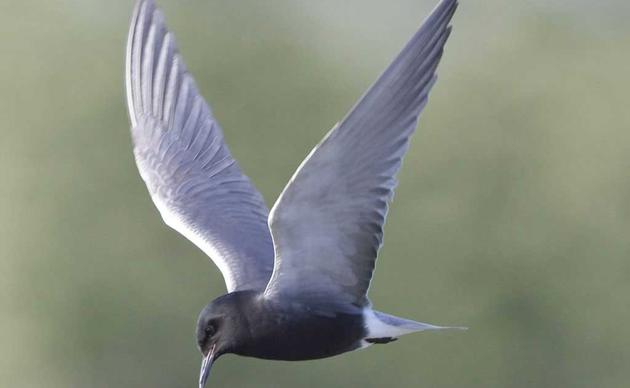The 2025 breeding season for endangered Great Lakes Piping Plovers marks another milestone in this species remarkable comeback. For the fourth consecutive year, this small shorebird – once on the brink of extinction – has set a new population record high: 88 unique pairs nesting across the Great Lakes region this summer. That’s seven more pairs than last year’s record of 81, and the highest count since the species was listed under the Endangered Species Act in 1986. These impressive gains reflect the dedication of conservationists, volunteers, and community partners working together to protect this iconic shorebird and restore its nesting habitat across the region.
“Each year we celebrate not only more plovers, but more people coming together to help them succeed,” said Stephanie Schubel, field lead and data coordinator for the Great Lakes Piping Plover Conservation Team. “The commitment across the region and beyond – from local volunteers and tribal partners to zoos from across the country – is what makes this recovery possible.”
Progress and Persistence
The long-term recovery goal for the Great Lakes population is to sustain at least 150 nesting pairs for five consecutive years, with 50 of those pairs outside of Michigan. Given that the population has been holding steady above 80 pairs since 2023 and climbing higher this year, the trajectory remains promising. This season, 101 nests were found, and 72 wild broods successfully hatched. Despite challenges from predation, storms, and a few late-season nest losses, the population fledged 110 wild chicks, averaging 1.3 fledged chicks per pair, slightly below last year’s rate (1.5) and the annual recovery goal.
Captive Rearing: Giving Every Egg a Chance
When storms wash out nests or adults go missing, the Great Lakes Piping Plover captive-rearing program at the University of Michigan Biological Station (UMBS) steps in to save vulnerable eggs. In 2025, 45 eggs from 15 clutches were incubated in captivity, producing 37 chicks. Of those, 36 captive-reared chicks were successfully released into the wild, one of the highest totals in program history. When chicks raised in the wild and in captivity are counted together, a total of 146 birds fledged this year, an average of 1.7 chicks per pair, which is well above the recovery goal.
These captive-reared birds continue to make vital contributions to the population’s growth. This summer, several captive-reared plovers returned to nest, including Searocket, who nested with Imani (offspring of the famous Monty and Rose) at Montrose Beach in Chicago. Together, they successfully fledged three chicks. The Great Lakes Piping Plover Recovery Team also released four captive-reared chicks at Montrose, with the hope of increasing the number of plovers returning to nest in Illinois. Elsewhere in the region, two captive-reared sisters released at Cat Island in Lower Green Bay, Wisconsin, in 2023 returned to nest there this summer, and successfully fledged six chicks. If you would like to learn more about the captive-rearing program, check out Raised to Be Wild: The Tale of a Great Lakes Piping Plover. All proceeds benefit Great Lakes Piping Plover conservation and research.
Monitoring Endangered Species
Bird monitors for Great Lakes Piping Plovers are trained volunteers and staff who protect nesting sites by educating the public, observing plover behavior, and safeguarding nests from predators and human disturbance. They work to ensure the survival of the endangered shorebirds by monitoring their nesting and chick-rearing activities, which provides data for conservation efforts like captive-rearing and banding. Audubon Great Lakes coordinates monitoring at Cat Island in lower Green Bay, where a team of 32 volunteers, staff, and partner staff monitored daily from early April through early August. In addition to routine monitoring, volunteer monitors helped track interactions of plovers with encroaching Herring Gulls to help form a response plan. Volunteer monitors with access to boats were critical in documenting nesting and post-nesting fate of Piping Plovers at nearby Longtail Point (where Piping Plovers have attempted to nest for three years in a row) as well.
Noteworthy Nesting Sites in 2025
Several key nesting locations contributed to the record-breaking pair count this season:
-
Sleeping Bear Dunes National Lakeshore (MI) hosted 34 pairs, producing 32 wild fledglings and 16 captive-reared fledglings, for a total of 48 young plovers.
-
Cat Island, Green Bay (WI) produced 10 fledglings from 4 broods, a continued success story for this restored site.
-
Apostle Islands National Lakeshore (WI) had a record count of 7 pairs, with a total of 12 chicks fledged.
-
Ontario, Canada, celebrated 6 fledglings from 4 broods, reflecting an important contribution from the Canadian side of the Great Lakes.
-
In Illinois, a Waukegan pair produced 2 fledglings (in addition to the 3 that fledged at Montrose), continuing the encouraging rebound of plovers on the southern Lake Michigan shoreline.
Banding: Tracking Journeys Across the Great Lakes and Beyond
Each plover’s story is made visible through annual banding efforts, led by the University of Minnesota’s Dr. Francie Cuthbert, Stephanie Schubel, and Alice Van Zoeren. This summer, 35 adults and 142 wild chicks were banded – data that help scientists track where Great Lakes Piping Plovers overwinter, stop during migration, their survival, reproductive success, and site fidelity.
Orange leg bands (shaped like little flags) identify Great Lakes Piping Plovers, linking them to a vast network of volunteers and birders who report sightings from beaches as far away as Georgia, the Carolinas, Cuba, and the Bahamas. Audubon Great Lakes and partners were able to track the migration of “Obie”, the senior male of the Cat Island Breeding site, thanks to his unique color bands. He was first spotted in Ontario on the north side of Lake Erie on April 4, marking the record early arrival in the Great Lakes! He was then observed in Bay City, Michigan on April 11 while working his way west before eventually arriving at Cat Island on April 17. The first fledgling of the 2025 season to be spotted on the wintering grounds was observed in South Carolina, having hatched only weeks earlier at Sleeping Bear Dunes National Lakeshore (MI).
A Community Effort
The continued success of the Great Lakes Piping Plover recovery effort depends on an extraordinary partnership that includes the U.S. Fish and Wildlife Service, National Park Service, U.S. Forest Service, state DNRs, Great Lakes Tribes, Detroit Zoo, Audubon, Birds Canada, and Lake Superior State University, among many others. From volunteers educating beachgoers to site monitors collecting nesting data to researchers banding adults and chicks, every contribution adds up to a growing chorus of hope for this small but mighty bird.
Looking Ahead
After four consecutive record-breaking seasons, the Great Lakes Piping Plover’s recovery story continues to inspire. With 88 pairs now breeding across the region and signs of resilience in even the most challenging conditions, the population’s comeback is one of the most remarkable bird conservation success stories of the last few decades. While challenges remain, including ever-increasing recreational disturbances and ongoing climate change, the foundation is strong. The plovers’ progress shows us what is possible when we combine deep commitment, cross-sector collaboration, and a long-term vision rooted in science and community.
You can help protect plovers and other beach-nesting birds by sharing the shore: keep dogs leashed, give fenced nesting areas plenty of space, and spread the word about these incredible birds’ journey toward recovery.





